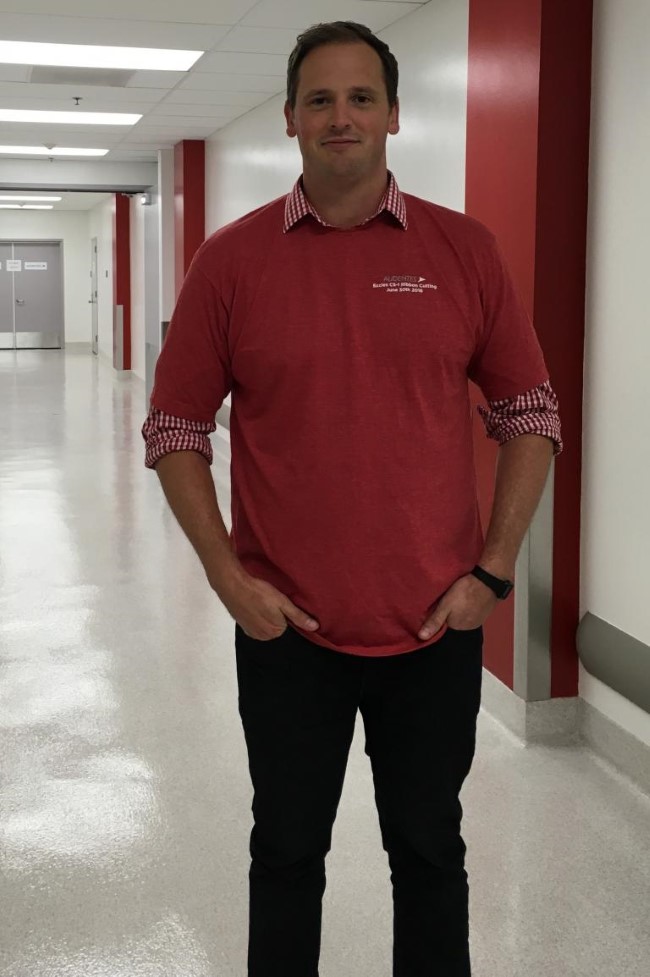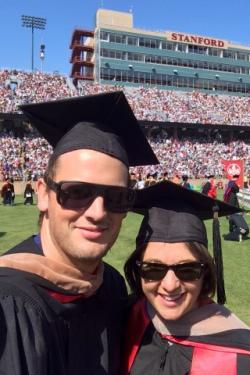Graeme Fielder

Graeme Fielder is now working in the United States for a biopharmaceutical company. He reflects on his journey from wading in the mud among the mangroves in Manukau to developing gene therapies for rare and life threatening genetic diseases.
Wading through the thick mud amongst the mangroves in a remote part of the Manukau Harbour, I searched for fungi samples. I was a Year 11 student at Manurewa High School, in the middle of conducting research for my science fair project. It was this project that would send me to the Royal Society of New Zealand’s National Science Fair Competition that year. I then went on to complete a Gold CREST project.
My fascination with science began when I entered high school. While I generally enjoyed my other subjects, there was something about my science classes that motivated me to learn more. I liked knowing how nature functioned at the biological and chemical level.
Up until this point in my life, I’d always been pursuing a career as a professional cricket player. However, the idea of being involved in science started to become equally inspiring. Having the ability and knowledge to contribute to our understanding of the world around us and harnessing that knowledge to better people’s lives seemed amazing. Was a scientist what I wanted to be when I grew up? I didn’t know for sure, I just knew I was heading at least in the right direction.
Dr Steve Thompson presents Graeme with his prize at the 2001 National Science Fair
When it came to deciding what I would do after high school, attending a university seemed like the perfect way to continue my interest in science – not just learning more about biology and chemistry, but also learning how to actually ‘do science’. I came across a bachelor program at the University of Auckland in biotechnology. The topic of biotechnology was a specific area of biology that particularly interested me, as it combined biology and chemistry, while also teaching you how to utilise them to make new things.
Enter my first university year - what a buzz! The independence that tertiary education inherently affords freshly graduated high school students is certainly intoxicating. But it is equally matched by the neurological stimulation you receive by having your learning solely focused on a subject area that REALLY interests you. Additionally, you begin to surround yourself with individuals that share your specific interests.
As I continued to learn more, my original interest in harnessing biology for the good of society evolved into something more. I began to learn more about the role of business and how it interfaces with science. There appeared to be this intricate relationship between the two subjects that would translate the research that I was doing at the lab bench to a new product or service – this could be a new medicine or a new consumer product.
At the conclusion of my bachelor studies, I realised I wasn’t done yet. I wanted to learn more; I wanted to further understand the intricacies of biology. By knowing more, I hypothesised, I could do more. More knowledge meant I could not only have more impact with my science, but, more relevant to a fresh graduate, I could have more choice over what I did for my career. I decided to continue my studies by undertaking a PhD in molecular medicine. Specifically, I was to research the molecular drivers of breast cancer with the objective of potentially identifying new targets to develop therapies towards.
While my academic studies were progressing, I also decided to see what this ‘business side of science’ was all about. Once again, I found myself entering a new attractive world. Everybody still talked ‘science’ but they were focussed more on how it could be used and how ‘business’ was part of getting it there. I wanted to learn more. I reasoned that in knowing both science AND business I would better enable myself to derive greater impact from my science knowledge. And so, outside of my scientific studies, I got involved in extracurricular activities (Velocity and Chiasma – both student-led organisations at the University of Auckland) that focussed on teaching me business and entrepreneurship skills.
After my doctoral studies, I started working for the New Zealand Institute for Plant and Food Research as a business development manager. Here my role was to work with scientists and with businesses, to create new products and services. For example, a new piece of software to help fruit growers or a new healthy food product for the supermarkets. Alongside my ‘day job’ I also launched my own venture – a secondary market for used laboratory equipment.
Despite my experience in business, I still felt like I wanted a more solid foundation in management skills, after all my vision had evolved. I wanted to know how to create positive change for the world, using science, but at a global level. I wanted to know how to build science organisations that could be a driving force for this change. In 2013, I was fortunate enough to be accepted into Stanford University’s Master of Business Administration (MBA) programme, in the center of Silicon Valley, San Francisco Bay Area. More so, I was awarded the Fulbright Platinum-Triangle Award in Business to support me on this journey.

Graeme receives his MBA
The MBA programme was like no other experience I have been on. I spent two years with some of the world’s most intelligent and impactful minds (my classmates), being taught by the best academics and America’s most influential business leaders. I learnt everything from how healthcare functions to how to better understand how people work and thus how to be a better manager.
Currently, I am based in San Francisco working for Audentes Therapeutics. It’s a four-year-old biopharmaceutical company that is developing gene therapies for rare, life-threatening genetic diseases. These are typically diseases where a mutation in a single gene has made the gene non-functional and the resulting protein is non-existent or faulty. Either way, the individual with the mutation lacks the functionality of this protein, causing disease. At Audentes, we hope to use non-disease causing viruses to deliver a new functional copy of the gene to the right tissue in the patient. The body can then use this new copy, to create functional copies of the missing protein, thus restoring its function in the body. This year we will be trialing a number of our gene therapies in clinical trials to firstly establish their safety, and then secondly determine if they are effective in treating the given disease. My specific role at Audentes is to help the company understand how our genetic medicine technology could be used to treat new diseases and how we should go about doing that.
What’s next? I’m not sure. But what I do know is that I hope to be back in New Zealand helping the country become more prosperous by translating science into products and services to be used across the globe.
Outside of my job at Audentes, I spend my time exploring the United States and the world. I enjoy going to new places (I think I’ve been to 37 countries now) and meeting new people. I enjoy playing any sport (right now it’s either snowboarding or golf) and of course I love to learn new things. After all, whether you’re in a high school classroom, in a cooking class with a partner, hiking across the Southern Alps with friends or wading between the mangroves with your mum, the learning never stops. It not only gives you the power to do more good in this world, it makes you a more worldly individual and it’s always fun.
